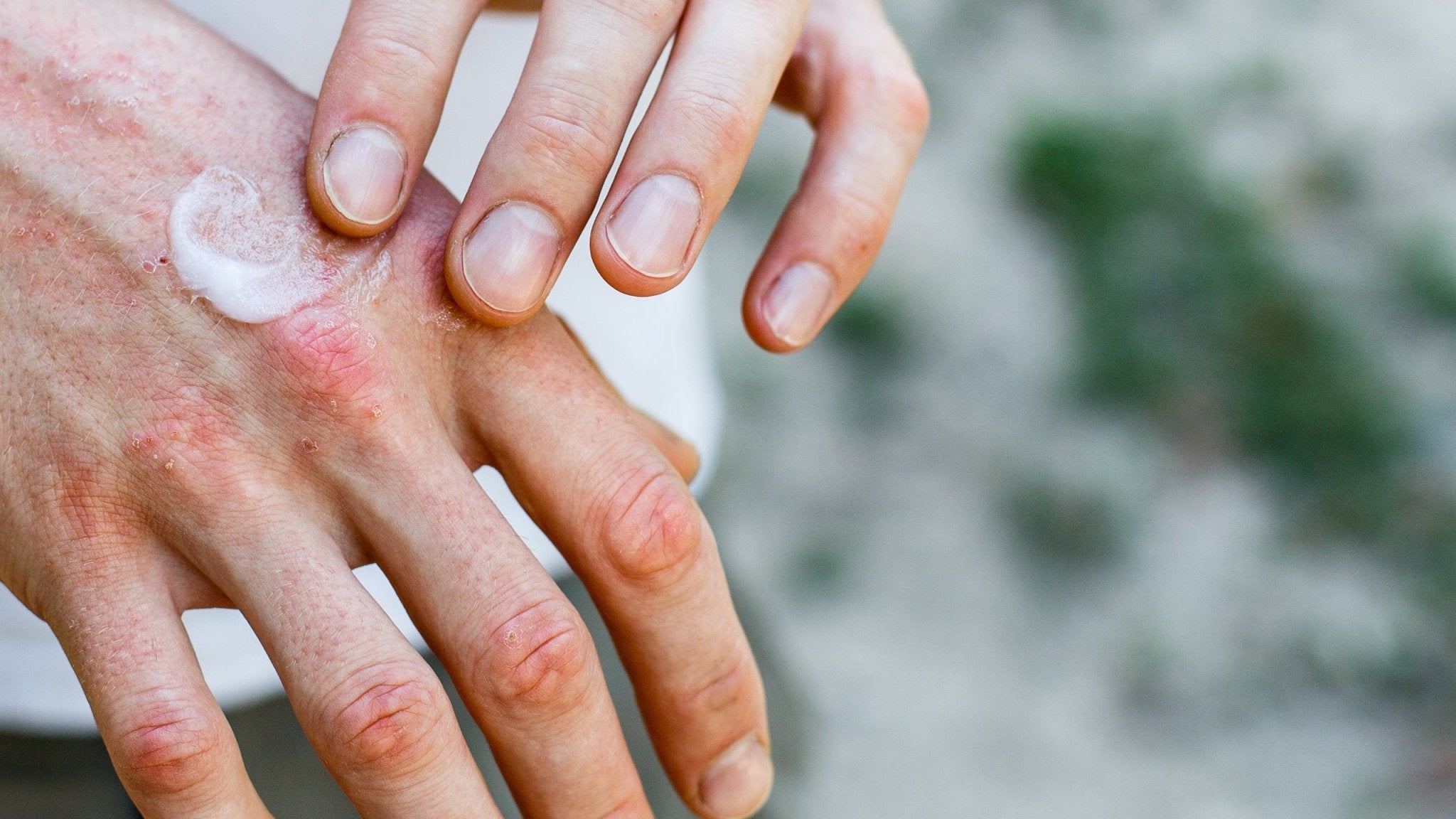Do your hands feel extra dry during the winter? Dry skin on hands this season is incredibly common: colder temperatures and indoor heating reduce the humidity in the air, which dries out your skin. Frequent hand washing can further weaken the skin barrier, leading to chapped hands, cracked fingers, and dry cracked hands in winter. If you have eczema-prone skin, you’re also likely to get dry skin on your hands during the winter months. The good news: there are simple steps you can take to keep your hands comfortable this season.
Dry Skin in Winter: What to Look Out For
We talk about “dry skin” a lot, but what exactly does it mean? Dry skin, which goes by the medical term xerosis, is skin that’s dehydrated and lacking moisture. Symptoms of dry skin include:
- Skin that appears flaky or scaly
- Skin that feels rough or taut
- Skin that feels raw or chapped
- Skin that’s redder, darker, or ashier than than usual, depending on your skin tone
- Cracked or split skin, also known as “fissures”
- Fine lines that are more pronounced than usual
- Itching, burning, or irritation
While dry skin can occur anywhere on the body, our hands are particularly prone to dryness because we use them a lot. When our hands get dry, they can feel rough and scaly. The fine lines on our palms can become pronounced, our hands may itch, and we can develop cracks and fissures on the knuckles, fingertips, and wrists.
Why Do I Get Dry Hands in the Winter?
Does cold weather cause dry skin? It sure does: lower temperatures reduce the humidity in the air, which draws moisture away from the skin. Indoor heating, including heaters, wood stoves, and fireplaces, makes the air—and our skin—even drier. That said, some people are more prone to dry skin on hands than others. Risk factors for dry skin include:
- Age: Our skin gets drier as we get older.
- Location: Living in cold, dry climates can contribute to dry skin.
- Skin conditions: if you are prone to eczema, psoriasis, or other itchy skin conditions, you’re likely to have dry skin.
- Sun damage: Exposure to UV light can damage the skin barrier and lead to dryness.
- Overwashing: Long, hot showers and scrubbing can strip the skin of natural oils.
- Wet work: If you work in an industry where your hands get wet regularly, such as food prep, hairdressing, custodial work, or healthcare, you’re likely to have dry skin on your hands.
- Harsh products: Skin and body care products that contain harsh soaps and drying ingredients can disrupt skin pH and contribute to dryness.
- Smoking: Smoking reduces blood flow to the skin and increases trans-epidermal water loss.
How to Prevent Dry Hands in Winter
Dry skin on your hands can be uncomfortable and even painful—but there are steps you can take to find some relief. Here’s what you can do to restore moisture to your hands and stay comfortable this season.
1. Up Your Moisturization Game
Rule number one when it comes to dry hands: moisturize, moisturize, moisturize. Opt for minimally formulated moisturizers that are fragrance-free, hypoallergenic, and contain ingredients such as glycerin, ceramides or squalene, which help restore and protect the skin barrier. You can reapply moisturizer to your hands as often as needed—we recommend keeping a bottle in your backpack or purse for when you’re on the go.
While some people prefer lightweight lotions, it can be helpful to apply a thicker, more occlusive winter hand cream. Check out Gladskin’s Eczema Cream with Micreobalance® and Eczemact™ Soothing Cream for Babies and Kids with Micreobalance®, which both moisturize and restore bacterial balance to the skin. For hands that are extra dry, try Gladskin’s ultra-nourishing Barrier Restore Cream.
2. Avoid Overwashing
Taking long, hot showers and washing your hands frequently can contribute to dry skin and chapped winter hands. We recommend using lukewarm (not hot!) water and limiting baths and showers to 10 minutes. Whether you’re bathing or washing your hands, choose gentle cleansers that won’t dry out your skin. Applying a winter moisturizer for dry skin right after you bathe and right after you’ve washed your hands helps seal moisture into the skin.
3. Wear Cotton Gloves at Night
One helpful way to restore moisture to dry hands: wear cotton cloves. Cotton gloves are breathable and non-irritating. They provide a protective barrier between your skin and possible irritants and allergens, and the extra layer can help your skin absorb moisture more effectively. Put on your gloves after you’ve applied your favorite winter skin cream, and consider keeping them on overnight.
4. Use a Humidifier
Using a humidifier restores moisture to indoor air, which can make your skin more comfortable and help with winter dryness. Clean your humidifier regularly to prevent mold.
When to See a Doctor
If your dryness persists or you notice any new skin symptoms, visit your primary care provider or a board-certified dermatologist. They can provide a diagnosis, help you determine the cause of dry skin on your hands, and recommend appropriate treatment.
